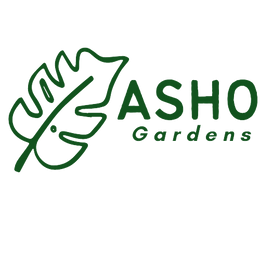



500+ Emperor William Lobelia Flower Seeds- Emperor William Trailing Lobelia- Blue Carpet Lobelia Erinus - Sparkling Sapphire --B138
500+ Sparkling Sapphire Lobelia Flower Seeds- Emperor William-Trailing Lobelia Erinus -(B138)
Lobelia seeds are easy to start and quick to grow. Lobelia Blue Carpet is a very popular annual that adds striking color to many diverse settings. Use Lobelia plants in containers, hanging baskets, edging along the flower garden, and as a general ground cover. It's very versatile and loves to bloom all summer long! Blue Lobelia is not drought tolerant, so make sure you water deep and long. The roots must have plenty of moisture to endure the baking hot sun in the middle of the day. Do not let it dry out. Blue Lobelia flowers make a beautiful ground cover that performs well in full sun to partial shade. Trailing Sapphire Lobelia also known as Emperor William Lobelia is a charming cascading Annual lobelia ideally suited for hanging baskets, window boxes and other containers. Numerous cool deep blue flowers with white centres are the perfect addition to any mixed container planting! Abundant intense blue or purple flowers, tidy growth habit and graceful cascading stems makes trailing lobelia (Lobelia erinus var. pendula) a valuable addition especially suited to container growing or to rock gardens. Native to South Africa, trailing lobelia is a tender perennial that is hardy to U.S. Department of Agriculture hardiness zones 9 through 10. It can be grown as an annual almost anywhere. Trailing varieties include "Light Blue Basket" and "Pendula Sapphire," the latter with white-eyed blue flowers. Traditionally grown from seed, commercial lobelia production is trending to vegetative propagation from cuttings. Starting Plants Growing Lobelia Erinus from seed is very rewarding! If starting Lobelia seeds outdoors, it will not begin to flower for two months after seed is planted. For quicker flowering, start the ground cover seed indoors 10 - 12 weeks before the last frost is due. Since the Lobelia seeds are very small, plant them on top of finely prepared soil without covering them. Transplant Lobelia seedlings after all danger of frost is passed, spacing them 6 inches apart. Remove flower spikes after blooming to produce further growth. Season: Annual USDA Zones: 3 - 9 Height: 4 - 5 inches Width: 6 inches Bloom Season: Summer Bloom Color: Bright blue Growth Rate: Moderate Environment: Full sun to partial shade Soil Type: Well-drained soil, pH 5.5 - 6.5 Deer Resistant: Ye Temperature: 72 F (22 C) Average Germ Time: 14 - 21 days Light Required: Yes Depth: Press lightly into the soil but do not cover Moisture: Keep soil slightly moist, but not wet until germination Plant Spacing: 6 inches Growing Step by Step: Fill a clean nursery flat with soilless potting mix. Put the flat in a nursery tray that can hold water. Sow trailing lobelia seeds on top of the potting mix. Do not cover them with soil since they need light to germinate. Press them gently in place with the bottom of another clean nursery flat. Water the planted seeds by putting water into the nursery tray and letting it soak up into the flat filled with soil. Empty the extra water out of the tray after the soil has become thoroughly wetto prevent soil from staying too wet, which encourages damp-off. Put the flat on its tray under grow lights where temperature is between 70 to 75 degrees Fahrenheit (21-23 C) Use a heating mat if necessary. Monitor the flat frequently for germination and for water needs. Water from the bottom as needed to keep the potting mix evenly moist but not soggy. Watch closely for damping off once seedlings emerge, because lobelia seedlings are prone to this fungus infection. Use a fungicide if necessary. Planting Seedlings Prick out and transplant seedlings into individual 2-inch pots when they have several sets of true leaves. Keep seedlings watered and fertilize them lightly with a high phosphorus fertilizer once they have become established in the pots. Transfer the seedling to the garden or planting container once it has filled out the 2-inch pot. Choose a decorative planter or hanging basket when you want to move the lobelias from sun to shade as temperatures change. Amend garden soil with compost or organic mulch to provide a rich, well-draining soil. Use soilless potting mix containing peat and perlite for containers. Mix in some controlled-release fertilizer. Plant the trailing lobelia where it can spill over rocks in a garden or over the edge of the container. Plant Maintenance Keep the soil evenly moist as the lobelia grows. Pinch ends back lightly after the plant has grown larger if you want to encourage branching and fullness. Shear the trailing lobelia back by one-third to one-half toward the end of spring so the plant renews growth through the summer and is ready to flower again as temperatures cool. Fertilize it lightly with a fertilizer high in phosphorus after pruning it back. Keep the plant watered. Move the container into partial shade during summer to lessen stress on the lobelia. Move it back into full sun when fall arrives. Summary of how to Grow Lobelia is best started indoors. Sow 10-12 weeks early, uncovered on the surface of the soil-less growing medium. Moisten by misting or bottom watering. Keep at 24 C (75 F) for the 14-21 day germination period then grow-on under lights at a cooler temperature of 15 C (60 F). Harden off and transplant outside to a partially shaded site after the danger of frost has passed.
